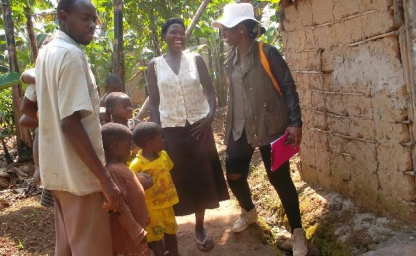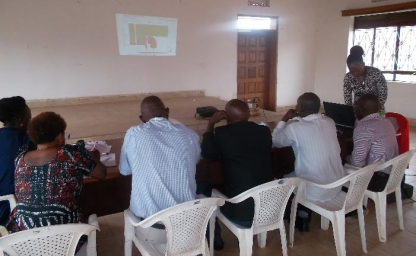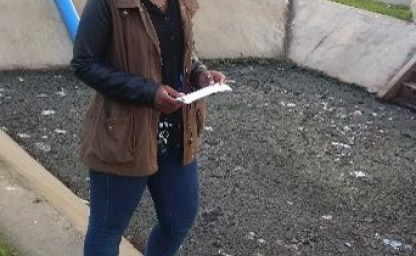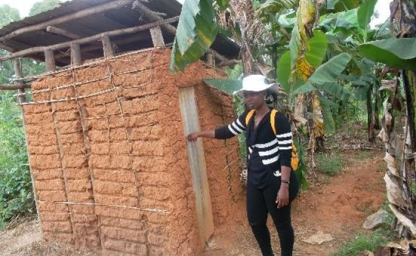Blog: Analysis of sanitation in Bushenyi Ishaka Municipality, Uganda
Author: Berverly F Nyakutsikwa
The moment I saw the topic of small town sanitation, I knew that it was for me. I had no idea that this project would land me in the picturesque town of Bushenyi Ishaka in Western Uganda, but I knew I was up for an adventure. The aim of my research is to evaluate sanitation in the municipality as well as exploring the factors that influence its present state. Additionally, I am also comparing with the situation in Bushenyi Ishaka with in Kampala, to see if the sanitation services and the factors that influence them vary from small towns to large cities.
My first stop was in Kampala for introduction meetings with the National Water and Sewerage Corporation and other SMALL project team members. While in Kampala I was also able to meet with some ministry officials to gain information on national sanitation policy. After Kampala my next stop was to my project site, Bushenyi Ishaka. One of the most enjoyable activities during my research was walking around the municipality to gain an overview of the sanitation systems that exist. To collect this information I had to travel far and wide, sometimes for hours in the hot sun or rain showers. Fortunately I had armed myself with a wide brimmed hat and sunglasses or a rain jacket, depending on the weather. My transport was either my bike or “boda boda” (a motorbike). Boda boda was my preferred mode of transport because it enabled me to gain access to terrain and spaces, which would be difficult or impossible to access with a larger vehicles. Exploring enabled me to interact with the town’s people as I was undertaking my research. I also got to see how sanitation and the environment changed as you moved away from the town centre into more peri-urban areas. I saw many different kind of toilets (latrines) some made from brick and cement, and others constructed from mud and wattle, with and without vent pipes. Interestingly, almost all households have access to a toilet (or latrine). In addition to the facilities people use, I also looked at what happens after the pits from the toilet became full e.g. which treatment facilities are nearby and how are they accessed. I experienced life as a local by walking through the local market, of course I visited the public toilets to collect data, but I also stopped and get my supply of juicy fresh fruits. As I was working in English this always drew the question of why a “Ugandan girl won’t speak Runyakole (the local language in western Uganda)”. After explaining that I am Zimbabwean, this cleared the air (as some interviewees thought I was showing off). Although my nationality did disrupt one or two interviews, as I was bombarded with questions about my homeland and current politics, as everyone remembered the hyperinflation era of 2008. Speaking English when making appointments on the phone also caused some confusion, which nearly saw me missing two interviews, as they were looking for a “white lady”.
I am happy I got to experience life in Bushenyi. The people are welcoming and friendly. One of my first experiences with the local cuisine was “….so much starch!”. They asked me what I wanted with my rice and stew, I had expected to be offered vegetables, but instead I was offered chapatti, matooke, karo or cassava. I had an unsuccessful experience with matooke (banana meal), my taste buds “rebelled”, so I kept asking for more of karo (millet meal) which I usually enjoyed with local fish.
My next step is to analyse the data from the field, carry out an assessment to explore the factors influencing the provision of sanitation in this town and compare the results with those for Kampala. I hope that my results will be useful for future project planning in the town.




